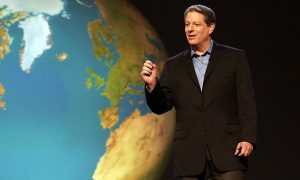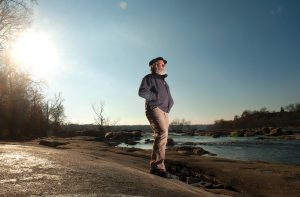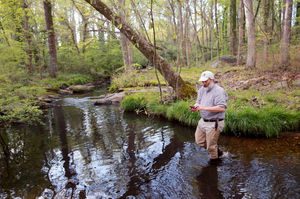According to John Muir, “In every walk with nature one receives far more than he seeks.” His words have inspired people across the decades and have created a world through his words where people can visualize and appreciate nature. Muir is considered the Father of our National Parks and fought to preserve the land in which he found solace. Environmental leaders like John Muir have the power to motivate the public and affect change in policy and government. In Dennison and Thomas’s chapter on environmental leadership, they emphasize the importance of power, passion, and knowledge performing in harmony to best motivate followers. In order to understand how each of these qualities work together, it is important to analyze how each one is important to leadership as a whole.
In this case, power is defined as having the resources to accomplish leadership goals. For instance, if the goals of the leader are to alter legislation, then the individual should be a legislator, lobbyist, or another involved party in order to influence lawmaking processes. A true leader must have some platform in which to stand and have his or her voice heard. As Quinn stated in her post, “passion turns to power.” In other words, having a stage is not important unless the person standing there truly cares about the issue. Al Gore is the epitome of an environmental leader with power. He used his power as Vice President to bring climate change to the spotlight and ensure the nation was aware of the issue. In fact, he won the Nobel Prize in 2007 for his work on global warming. Gore proclaimed, “Future generations may well have occasion to ask themselves, ‘What were our parents thinking? Why didn’t they wake up when they had a chance?’ We have to hear that question from them, now.” His boldness and commitment to the cause led to his success as an environmental leader. Those in positions of power have a unique opportunity to inspire the community and more leaders should take the opportunity to use their own stage and voice their opinions about the environment to others. We are in the midst of the sustainability movement and it is imperative that we inform the public.
Another essential component of a great leader is passion. People are more motivated by individuals who demonstrate that they truly care about a cause. Ralph White is the perfect example of this kind of leader. He is an inspirational figure who will go to the ends of the earth to protect the James River. His accomplishments as the head of the James River Park System prove his dedication to the community. When Nathan Burrell took over his job, many people warned him that he had “big shoes to fill.” As McKenzie alludes in her post, White was an essential asset to the government to have someone so committed in his position. Beginning in 1980, he was the only employee working for the park system and worked until Burrell took his place. His dedication to the river is the main reason why so many Richmonders look up to him as the poster figure of the James. White displays a desire to protect the river at all costs and it is quite an admirable quality. We could all take a lesson from Ralph White as we must remember why we are leading in the first place.
Knowledge is the last key to being a successful leader. A leader must be aware of the issues at hand to have intellectual conversations with his or her followers or, especially, government representatives. Fully understanding the problems is the foundation in which passion is based. Passion is driven by the desire to change something and is non-existent without comprehension of the issue. The Reedy Creek Coalition is an excellent example of an organization with the knowledge to be effective. Bill Shanabruch, the backbone of the coalition, has informed himself of every aspect of the Reedy Creek stream restoration to be able to inform others who are interested in learning more about the proposed project. As Jack reiterated in his post, Shanabruch’s knowledge and passion for the restoration is truly “evident.” In an interview with him at the creek, he provided countless statistics off-hand and was completely prepared to answer all questions. Working as the head of the organization, he has created a means for the public, especially local homeowners, to voice their concerns to the local government. Without his effective leadership, the coalition would not have been as successful as it was. The City Council has voted to not accept funds from the Department of Environmental Quality and the project is currently halted for the foreseeable future. Knowledge truly is power. Shanabruch’s commitment to understanding the issues makes him a good leader. A leader is responsible for learning the appropriate skills for the goals they have in mind.
However, there is no set list of characteristics that defines the perfect leader. Clearly, John Muir and Al Gore approach environmentalism in very different ways, but both are still effective leaders. There are many factors that determine when a certain type of leader is needed: time period, political movements, as well as the followers themselves. Timing is everything and Bill Shanabruch stepped in at the right time for the residents of Forest Hill Park and became a voice for the community. It is impossible to pinpoint exactly what kind of person is the best leader, but the ultimate goal is to solve issues with the support of the public. Every leader needs followers and the only way to gain support is to motivate people to care about the cause. Effective environmental leaders are the ones like Al Gore who voice their opinions, the ones like Ralph White who care, and the ones like Bill Shanabruch who are well-informed. We could all learn from these successful leaders and their accomplishments. While each of them are very different, they all have one thing in common: a desire for sustainability. Keeping our goals in mind, how can we become the environmental leaders of our generation?



